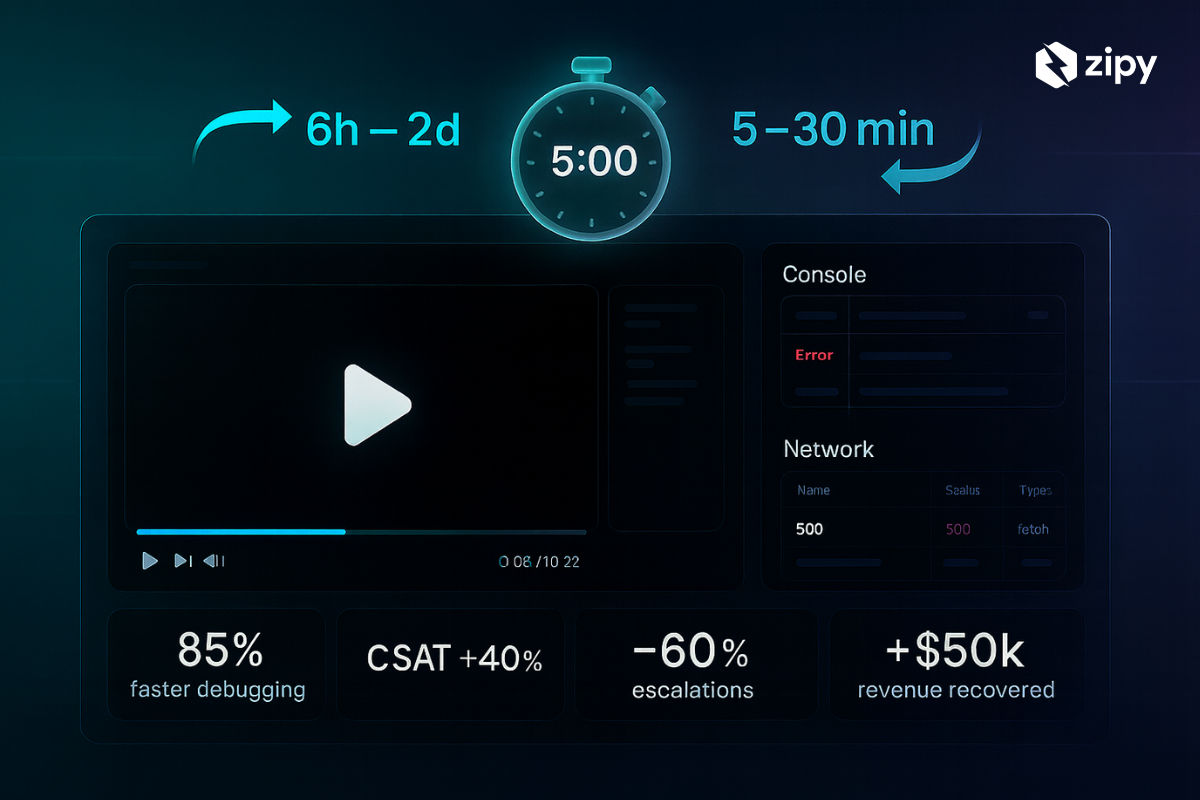Introduction
Welcome, fellow developers! Whether you're a seasoned mobile app developer or new to the Kotlin world, dealing with runtime errors is part and parcel of our coding journey. Today, we're diving deep into one of the common culprits that often catch us off guard – the NumberFormatException. This article aims to shed light on this exception, walking you through its nuances and providing practical solutions to avoid letting it hinder your app's performance.
Catch errors proactively with Zipy. Sign up for free!
Try Zipy now
Understanding NumberFormatException in Kotlin
At its core, a NumberFormatException in Kotlin is thrown when an attempt to convert a String into a numeric type fails because the String does not have an appropriate format. Kotlin, being a statically typed language, is very particular about the types of values it deals with. This error is not just a minor inconvenience; it can cause your app to crash if not handled properly. So, let's decode this exception and turn it into an opportunity to write more robust code.
Scenario 1
Error code
val numberString = "10a"
val number = numberString.toInt() // Throws NumberFormatException
Corrected code
val numberString = "10a"
val number = numberString.toIntOrNull() ?: 0 // Corrected here: using toIntOrNull() instead of toInt()
Solution Summary
In this scenario, using toIntOrNull() instead of toInt() allows the program to return null if the conversion fails, which we can then handle gracefully, preventing the NumberFormatException.
Scenario 2
Error code
val input = "102.5"
val integer = input.toInt() // Throws NumberFormatException
Corrected code
val input = "102.5"
val integer = input.toDouble().toInt() // Corrected here: converting to Double first, then to Int
Solution Summary
The error was caused by attempting to directly convert a floating-point string to an integer. The solution involves converting the string to a Double first, then to an Int, avoiding the NumberFormatException.
Scenario 3
Error code
val userData = "100,000" // Assuming a comma for thousands
val userNumber = userData.toInt() // Throws NumberFormatException
Corrected code
val userData = "100,000"
val userNumber = userData.replace(",", "").toInt() // Corrected here: removing commas before conversion
Solution Summary
The presence of non-numeric characters (commas, in this case) caused the error. Removing these characters before attempting the conversion prevents the NumberFormatException.
Handling NumberFormatException in Kotlin
Handling NumberFormatException effectively in Kotlin involves anticipating where the error might occur and using Kotlin's null-safety and exception handling features. Techniques such as using toIntOrNull() instead of toInt() and validating input strings before attempting conversion can significantly reduce the chances of encountering this error.
Proactive Error Debugging with Zipy
Conquering runtime errors like NumberFormatException is crucial for the seamless operation of your Kotlin applications. That's where Zipy comes into play. Zipy offers proactive error monitoring and user session replay capabilities, allowing you to swiftly identify, debug, and fix errors in your codebase. Embrace the power of Zipy for an error-free development experience.
Debug and fix code errors with Zipy Error Monitoring.
Sign up for free
Conclusion
In conclusion, while the NumberFormatException in Kotlin can be a source of frustration, understanding its root causes and implementing the strategies discussed can help you manage it effectively. Remember, every error is an opportunity to improve the robustness of your application.
Resources on how to debug and fix Kotlin errors
- 9 Kotlin errors you should know: A comprehensive debugging guide for Kotlin exceptions
- Kotlin debugger for Android Developers | Zipy AI
- How to handle Kotlin NullPointerException?
- How to handle Kotlin ArrayIndexOutOfBoundsException?
- How to handle Kotlin ClassCastException?
- How to handle Kotlin IllegalArgumentException?
- How to handle Kotlin IllegalStateException?
- How to handle Kotlin OutOfMemoryError?
- How to handle Kotlin SecurityException?
- How to handle Kotlin NetworkOnMainThreadException?
Frequently Asked Questions
Why does Kotlin throw a NumberFormatException?
Kotlin throws a NumberFormatException when it attempts to parse a String into a numeric type, but the String does not have an appropriate format. This ensures type safety but requires developers to handle possible errors.
How can I prevent NumberFormatException in Kotlin?
Prevent NumberFormatException by using parsing methods like toIntOrNull() which return null instead of throwing an exception, and by validating or sanitizing input strings before conversion.
What is the difference betweentoInt() andtoIntOrNull() in Kotlin?
toInt() attempts to convert a String to an Int and throws a NumberFormatException if unsuccessful. toIntOrNull() returns null instead of throwing an exception, making it safer for handling potentially incorrect inputs.
Can I customize error handling for NumberFormatException in Kotlin?
Yes, you can customize error handling by using try-catch blocks around your code that may throw a NumberFormatException, allowing you to define a specific course of action when the error occurs.
Is it necessary to always handle NumberFormatException?
While not always necessary, it is good practice to handle NumberFormatException, especially when dealing with user input or parsing strings from external sources, to enhance your app's robustness and user experience.
Key Takeaways
- Using
toIntOrNull()overtoInt()can prevent your app from crashing due toNumberFormatException. - Converting strings to the correct numeric type before the final conversion can help avoid errors.
- Sanitizing strings to remove non-numeric characters is crucial for successful parsing.
- Proactive error debugging with tools like Zipy can significantly enhance your error handling strategy, making your Kotlin applications more reliable and user-friendly.
.svg)






.png)




.webp)